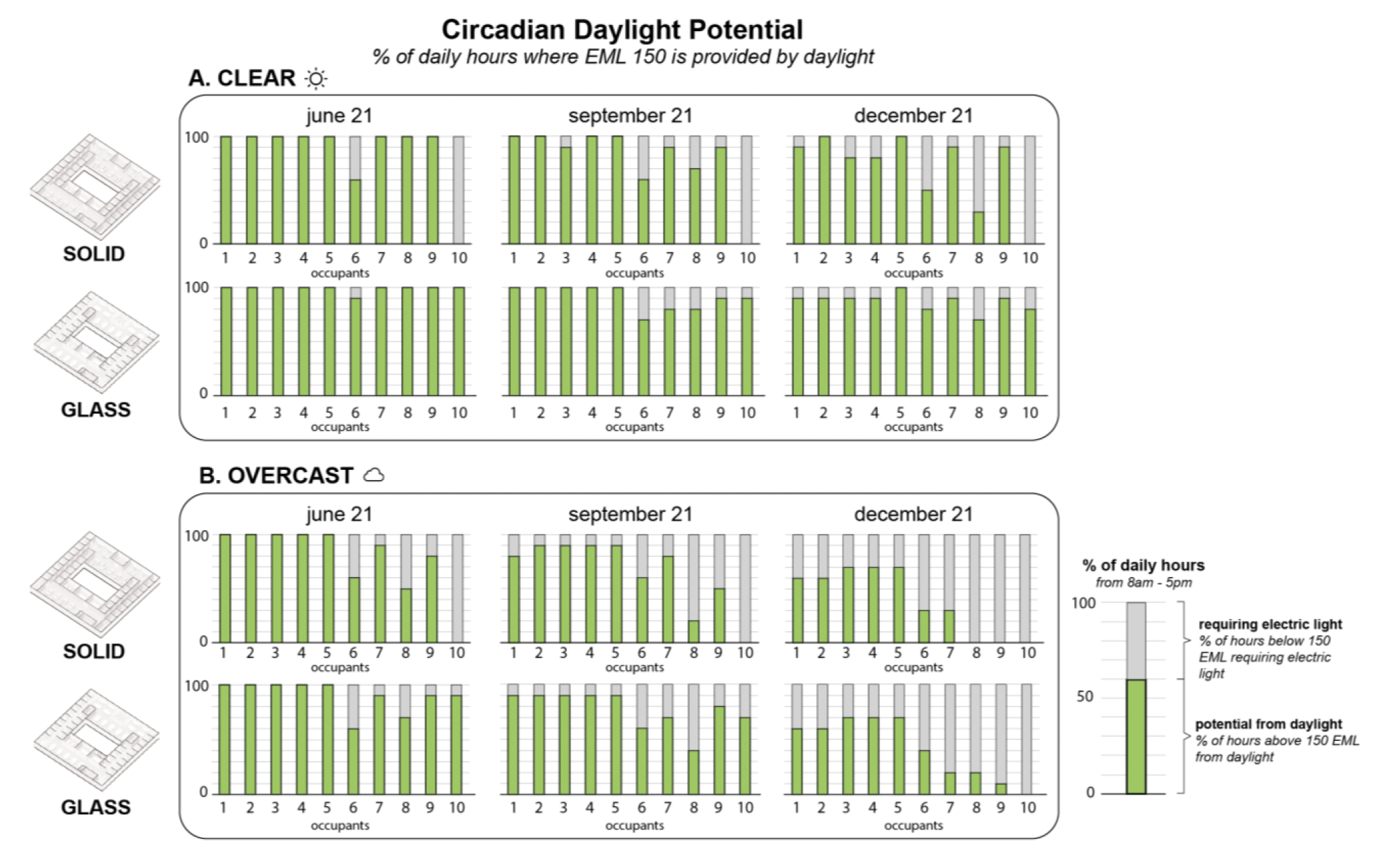Two research papers have been accepted to the Building Simulation 2023 conference in Shanghai, China. Both papers introduce simulation-based research on circadian health potential in the workplace and disseminate the findings from projects between Baker, ESBL, and collaborators at PNNL and Oculight Analytics.

% of workstations that meet circadian light exposure recommendations (275 EML) between 9am – 1pm under three control scenarios: no window shading, automated shading with 2 window groups, and automated shading with 13 window groups
The first paper, titled ‘The Impact of operated window shading on visual comfort, non-visual health, and energy demand from electric lighting,’ was co-authored by Siobhan Rockcastle (Baker Lighting Lab/IHBE), Alen Mahic (ESBL/IHBE), and Sarah Safranek (PNNL). This paper presents a novel simulation framework to evaluate the energy demand of a luminaire level lighting control system (LLLC) to meet visual comfort and non-visual health requirements under a variety of lighting and shading control scenarios. This work was funded by the U.S. Department of Energy’s Lighting R&D Program, part of the Building Technologies Office within the Office of Energy Efficiency and Renewable Energy (EERE).

Graphic showing the circadian daylight potential of a courtyard office building under two sky conditions (A. Clear and B. Overcast) and two interior design conditions: solid partitions and glass partitions.
The second paper, titled ‘Disparities in circadian potential: the impact of building form and interior wall composition on dynamic light exposure,’ was co-authored by Siobhan Rockcastle (Baker Lighting Lab/IHBE), Hadley Carlberg (Baker Lighting Lab), Maryam Esmailian (Baker Lighting Lab), and Maria Lovisa Amundadottir (Oculight Analytics). This paper introduces the comparative findings from a simulation-based study on the circadian potential of office environments under a dynamic occupancy scenario. This paper included major contributions from student researchers in the Master of Architecture and PhD programs in the College of Design at UO.
